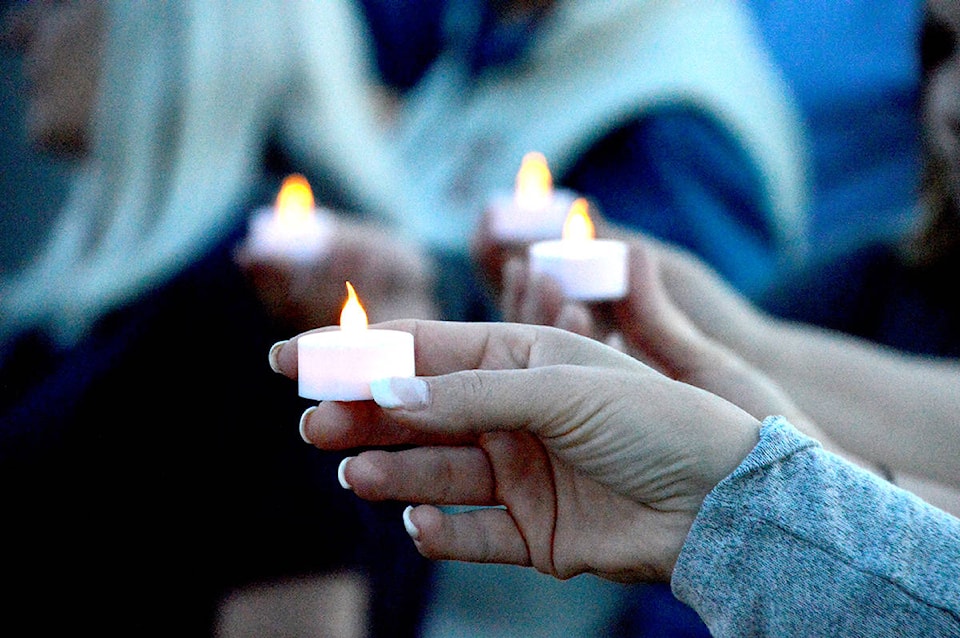The Canadian Mental Health Association held a candlelight vigil Sunday, Sept. 10, to mark World Suicide Prevention Day.
The theme of the event, held in front of the Dairy Queen on the highway through Cranbrook, was “Take a minute, change a life.”
Lyle Stuart, Regional Gatekeeper Coordinator with the CMHA, said in opening remarks that “suicide is something that has more than likely affected each of us in one way or another.”
Stuart read a list of statistics that show that about 4,000 Canadians die each year by suicide.
• In BC approximately 500 individuals commit suicide each year.
• The majority of individuals that commit suicide are males, between 40 -50 years of age, and it is the leading cause of death for 15-24 year olds.
• The most at-risk group for suicide is men in their 40s and 50s, and men over the age of 80 have the highest rate of suicide.
• While women are three to four times more likely to attempt suicide than men, men are three times more likely to die by suicide than women. Men tend to use more immediately lethal means and are much less likely to reach out for help. However, any suicidal behaviour, whether lethal or not, originates in suffering and results in trauma.
• Suicide is the second-most common cause of death among young people.
• First Nations, Inuit and LGBT people have higher rates of suicide-related behaviours.
• Up to 90% of people who take their own lives are believed to have substance use problems or a mental illness such as depression or anxiety — whether diagnosed or not — at the time of their suicide.
“The idea of World Wide Suicide Prevention Day is to not only to stand and remember those who have ended their life by suicide, but to show suicide is preventable,” Stuart said. “That there is and are people who care and can help someone move past their thoughts that suicide is the answer. That person is you.
“Suicide is preventable and you can learn what to do.”
There are programs available through the Canadian Mental Health Association that can teach you and provide you with the tools to recognize, warning signs, talk to and ask someone about suicide.
ASIST and safeTALK are two programs that are specifically designed to give you those tools.
Contact the CMHA at 426-5222, extension 3124, or visit for more information on these training programs. Or visit the website www.askbout suicide.ca.
Statistics from www.cmha.bc.ca/suicide-facts-and-figures/
